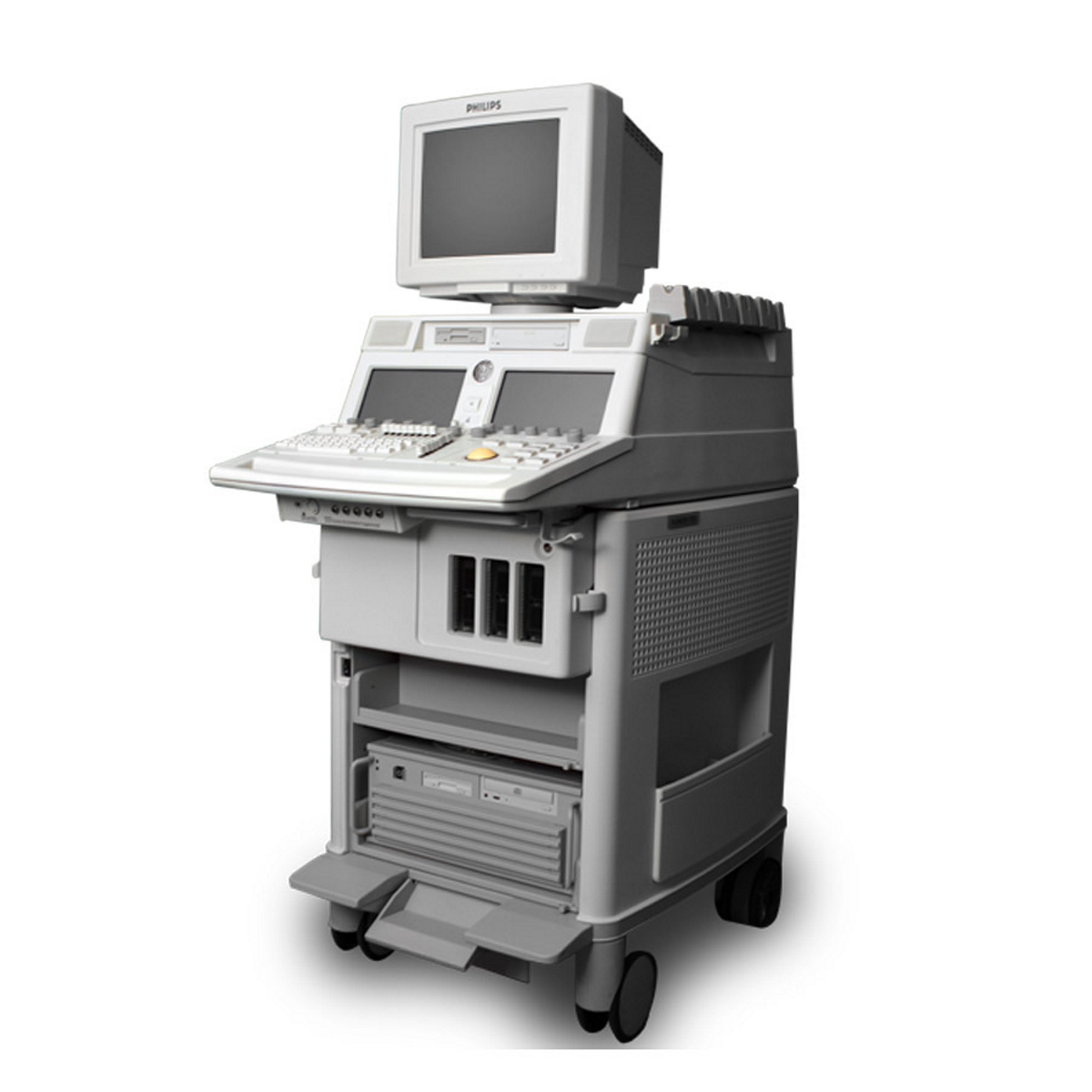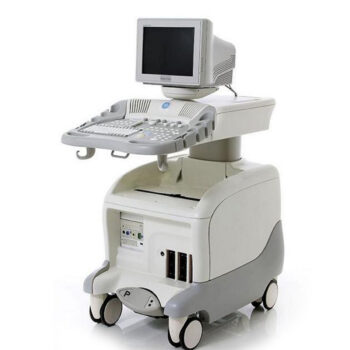The PHILIPS SONOS 7500 Ultrasound system is a cutting-edge medical imaging technology designed to provide exceptional imaging capabilities across a range of medical applications. With its advanced features, high-quality imaging, and versatility, the SONOS 7500 has become an indispensable tool in healthcare settings for accurate diagnostics and treatment planning.
Key Features and Functionality:
1. Exceptional Imaging Quality: The SONOS 7500 is engineered to deliver high-resolution images with clarity and precision. It employs advanced transducer technology and sophisticated imaging algorithms to provide detailed visuals of anatomical structures, tissues, and blood flow patterns.
2. Broad Clinical Utility: This ultrasound system is designed to serve various clinical specialties, including cardiology, obstetrics, gynecology, abdominal imaging, vascular assessment, and musculoskeletal imaging. Its versatility allows healthcare professionals to use it for a wide range of diagnostic purposes.
3. Advanced Doppler Imaging: The system offers comprehensive Doppler imaging capabilities, allowing clinicians to assess blood flow velocities, directions, and abnormalities. This is particularly valuable for evaluating cardiac function, vascular health, and other circulatory conditions.
4. Multi-Dimensional Imaging: The SONOS 7500 supports multi-dimensional imaging modes such as 2D, 3D, and 4D. This enables healthcare providers to gain insights into spatial relationships and dynamic changes within the body, enhancing diagnostic accuracy and treatment planning.
5. User-Friendly Interface: The system boasts an intuitive user interface that simplifies operation. Easy-to-use controls and customizable settings streamline the imaging process, allowing healthcare professionals to focus on patient care rather than complex system operation.
Clinical Applications:
The PHILIPS SONOS 7500 Ultrasound system finds applications across various medical disciplines:
1. Cardiology: With its exceptional imaging quality, the system aids in assessing cardiac anatomy, function, and blood flow. It plays a crucial role in diagnosing heart conditions, evaluating valve performance, and monitoring cardiac health.
2.Obstetrics and Gynecology: The system allows obstetricians and gynecologists to monitor fetal development, assess maternal health, and diagnose reproductive conditions. Its 3D and 4D imaging capabilities offer a comprehensive view of the womb and developing fetus.
3. Abdominal Imaging: In abdominal imaging, the system assists in visualizing organs such as the liver, kidneys, and pancreas. It aids in diagnosing conditions like gallstones, tumors, and organ abnormalities.
4. Vascular Assessment: The Doppler imaging modes enable precise evaluation of blood flow patterns within arteries and veins. This is vital for detecting vascular diseases, thrombosis, and assessing blood vessel integrity.
Maintenance and Quality Assurance:
Regular maintenance is essential to uphold the performance and reliability of the PHILIPS SONOS 7500 Ultrasound system. Routine servicing, calibration, and software updates are recommended to ensure consistent image quality and optimal system functionality. Quality assurance protocols, including periodic performance testing, help identify deviations and ensure accurate and reliable results.
Conclusion:
The PHILIPS SONOS 7500 Ultrasound system stands at the forefront of medical imaging technology. Its ability to provide exceptional image quality across multiple clinical applications has made it a cornerstone tool for accurate diagnoses and treatment planning. As a versatile and user-friendly system, it contributes to improved patient care, allowing healthcare professionals to make informed decisions based on detailed and precise imaging data.
A comprehensive portfolio of imaging tools never before offered on a single system
- Live 3D Echo
- Omni TEE 3D acquisition
- Live xPlane imaging
- Acoustic Quantification
- Omni Plane III TEE transducer
- Color Kinesis technology
- Ultra band transducers
- Tissue Doppler Imaging
- Quick Touch user interface
- Philips Acoustic Densitometry capability
- Ultra Dynamic Stress Echo
- Sophisticated contrast imaging tools
- Advanced connectivity including Xcelera information management solution software
- Compatible with QLAB off-line quantification










